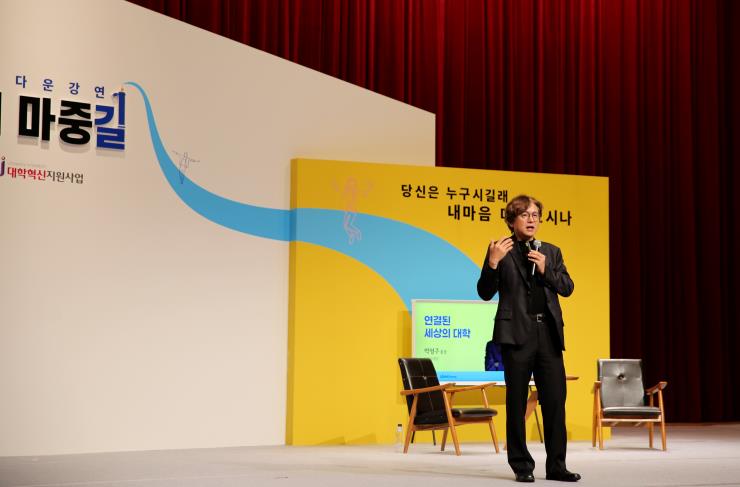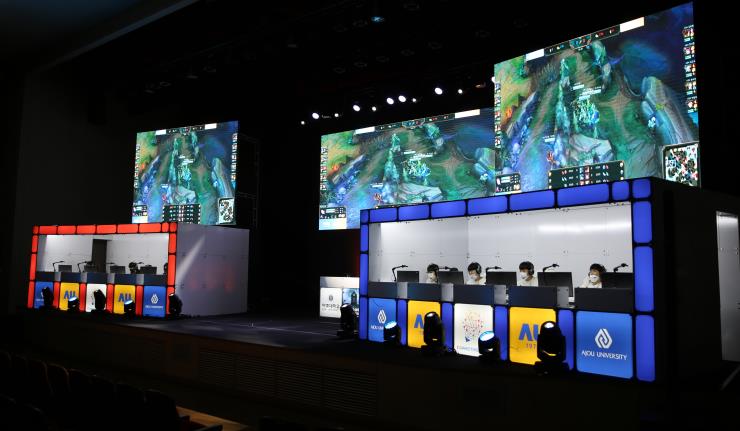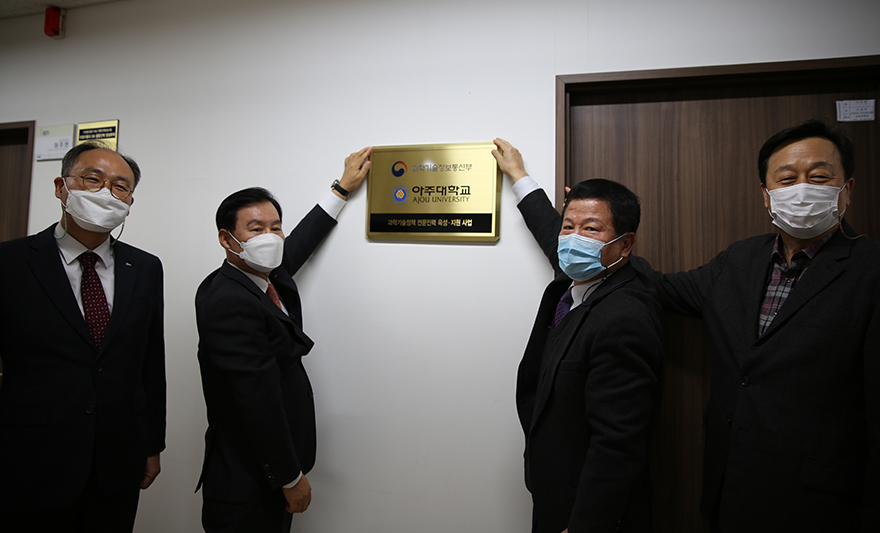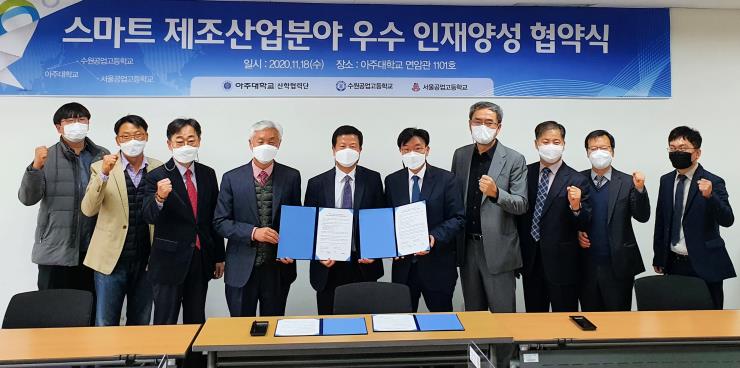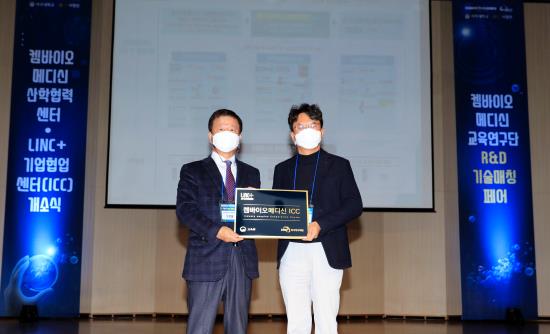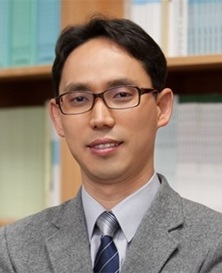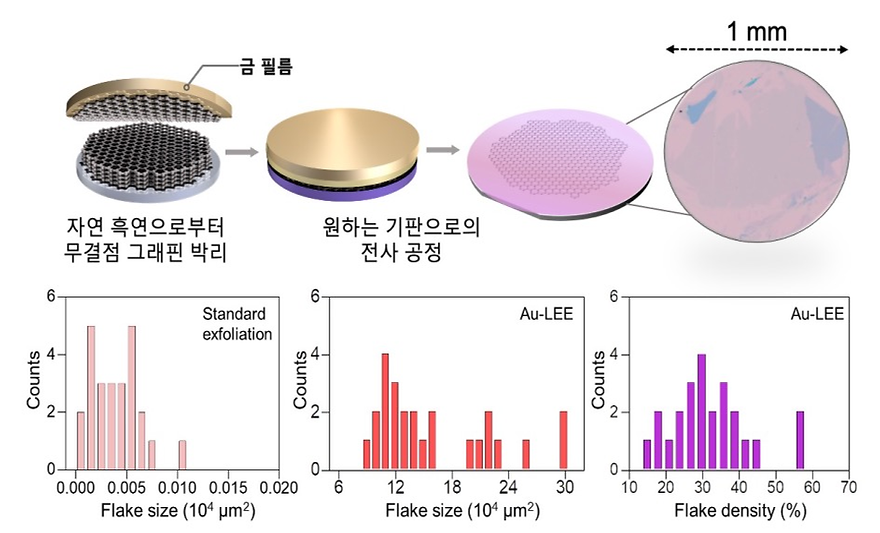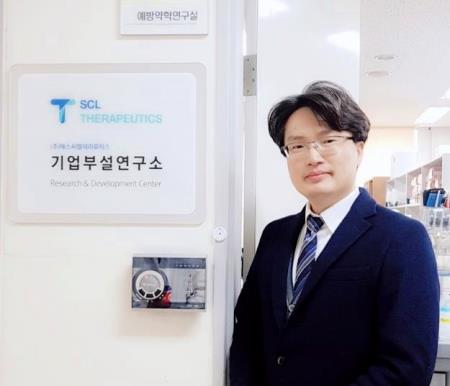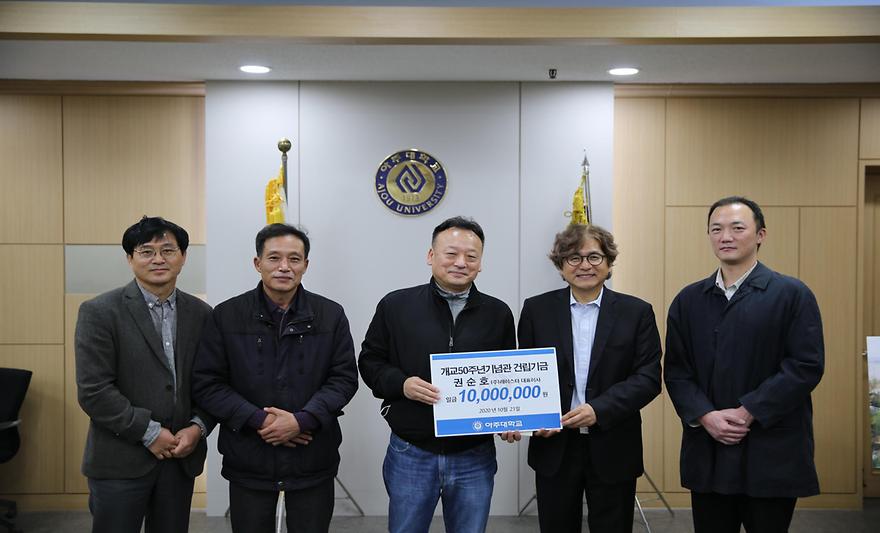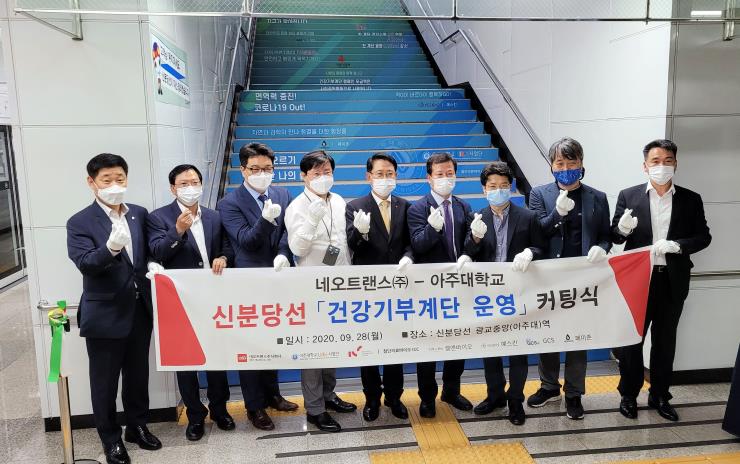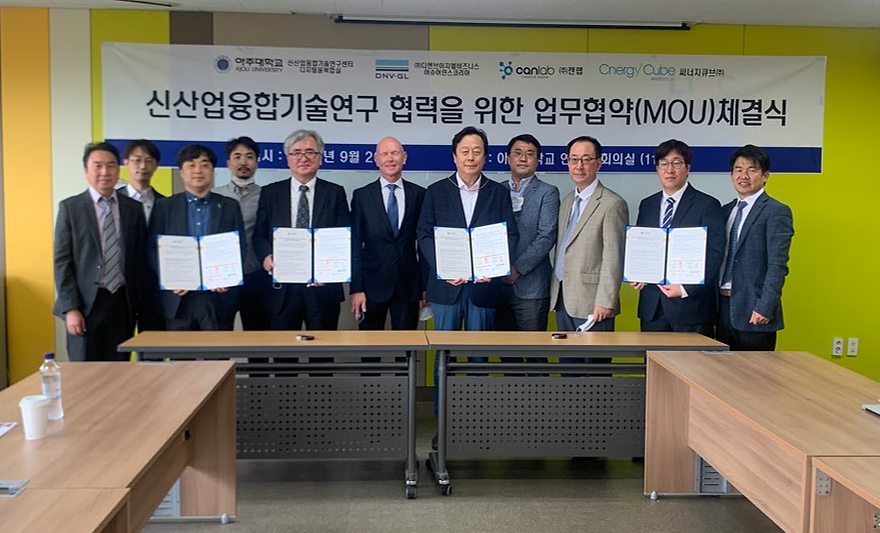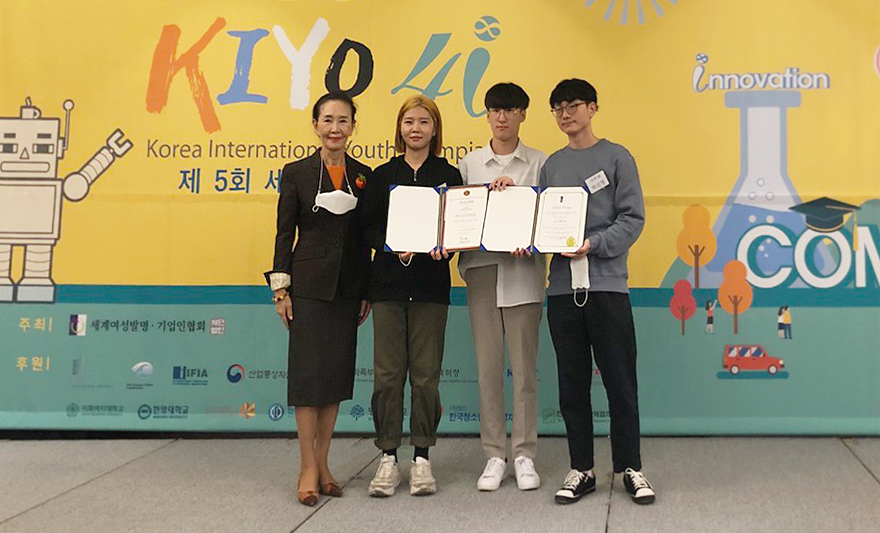-
The Very Ajou Lecture Series, featuring back-to-back special lectures from notable figures and opinion leaders in Korea, was successfully streamed in their entirely on Ajou’s YouTube channel with to stimulate thought and interesting discussion online.The Very Ajou Lecture Series was a three-day event lasting from November 24-26. Four speakers presented daily lectures from 2 p.m. to 6 p.m. More than 14,000 viewers streamed these lectures live.The 12 special speakers included: University President Park Hyung-ju; Kim Yeong-ran, Chair Professor in the Law Schoo and former Korean Supreme Court JusticeProf. Kim Gyeong-il (psychology); Prof. Roh Myeong-woo (sociology)Choi Jae-cheon, animal behaviorist and current chair professor at Ewha Womans University and the inaugural president of the National Institute of EcologyChoi Jin-seok, former professor of philosophy at Sogang University and now chair of the New Word New Action Foundation, and advocate for developing practices for better life and better societyPark Jun-yeong, attorney renowned for handling the most challenging retrial cases for the wrongly convictedWoo Seok-hun, an economist and professor at Sungkyul UniversityYang Dong-su, attorney and advocate of apartment cooperatives through Deoham, an innovative social enterprise;Seo Eun-guk, professor of psychology at Yonsei University, researcher on happinessJang Kang-myeong, former journalist turned writerNam Hyeong-do, popular reporter for Money Today and author of the Cheheolism series, which has attracted the largest number of social media followers among all active journalists in Korea today.“Thought provoking” was the keyword and theme of this year’s lecture series. The lectures were designed not to impart wisdom and knowledge unilaterally, but to provoke the audience into questioning and finding their own answers. More than a thousand live audience members were chosen based on their pre-event applications to participate in the interactive lectures through videoconferencing. These audience members posed questions before and during the lectures, and their communication with the speakers was moderated by Chae Ja-yeong.Recordings of the lectures will be streamed individually on Ajou’s YouTube channel starting in December. The program was sponsored by the University Innovation Support Program of the Ministry of Education and the National Research Foundation of Korea.Lecture ProgramDay 1 (November 24)Park Hyung-ju (President, Ajou University): “Universities in a Connected World”Seo Eun-guk (Professor of Psychology, Yonsei University): “Happiness Is Not a Concept, but an Experience”Yang Dong-su (CEO, Deoham): “A Public-Rights Lawyer for Apartment Communities”Park Jun-yeong (Attorney at Law): “But I Still Hope in Relationships”Day 2 (November 25)Choi Jae-cheon (Chair Professor, Ewha Womans University): “With COVID-19 and the Ecological Turn”Choi Jin-seok (Chair, New Word New Action): “We Can Cross Only by Thinking”Jang Kang-myeong (Writer): “An Age of Snack Information”Kim Gyeong-il (Professor of Psychology, Ajou University): “How Should We Study in the Age of COVID-19?”*Day 3 (November 26)Woo Seok-hun (Professor of Economics, Sungkyul University): “In the Middle of COVID-19”Kim Yeong-ran (Chair Professor of Law, Ajou University): “Being a Judge and Reading”Nam Hyeong-do (Journalist, Money Today): “The Power of Truth That Makes Everything Possible”Roh Myeong-woo (Professor of Sociology, Ajou University): “You Are Not Alone”Prof. Kim Yeong-ran Chairman Choi Jin-seok (New Word New Action)
-
473
- 작성자OI***
- 작성일2020-12-28
- 5522
- 동영상동영상
-
Ajou e-Sports Championships 2020, organized by the University’s student union, concluded with great success. Held online in place of the usual offline campus-wide festival, the Championships drew much attention and participation from students.The student union held matches for three games, League of Legends (LOL), Crazyracing Kartrider, and Among Us, from November 7-16. Participants organized their own teams and competed online. The semifinals and final for LOL took place before a live audience in the Yeonam Hall auditorium.The offline matches were hosted by popular game hosts (Jeon Yong-jun and Lee Hyeon-woo) and livestreamed via Ajou’s YouTube channel. A limited number of spectators were admitted, with a much larger number of Ajou students streaming the game.Other famous game streamers were also invited to the offline matches to play against Ajou students, including current students who won a lottery to participate in the game as well as the semifinalists and finalists chosen through the previous matches.Seon Eun-jae (chemical engineering), head of the Culture Planning Bureau in the student union who planned the event, explained, “It was challenging to organize an event of this scale, but we did it in the hopes of giving Ajou’s students a chance to have fun and create good memories amid these difficult times.”The student union organized the event to cater, at least in part, to students’ thirst for on-campus activities and interaction, which have been curbed by the recent pandemic.Video footage from the Championships, including those of major matches, is available for streaming on Ajou’s YouTube channel.# Ajou on YouTube: Click to watch Championship footage.
-
471
- 작성자OI***
- 작성일2020-12-28
- 5587
- 동영상동영상
-
A ceremony was held on November 23 to celebrate the installation of the official signboard for the new Graduate School of Science and Technology Policy (GSSTP) at Ajou University. The GSSTP, developed with the help of the Ministry of Science and ICT (MSIT), was established to provide postgraduate programs in science and technology policy; the institution operates in only a few select schools that were chosen by the Ministry in July.The ceremony also saw the signing of a partnership agreement between the GSSTP and the Korea Institute for Research and Development (KIRD), promoting the exchange of information and research collaboration on science and technology policy. KIRD is responsible for running the MSIT’s GSSTP program.The ceremony, held at the Yulgok Hall, was attended by all involved key officials, including the University’s President Park Hyung-ju; Oh Yeong-tae, Vice President for Industry-Academia Cooperation; Lee Joo-yeon, Professor of Industrial Engineering and head of the New Industrial Technology Center; and Park Gwi-chan and Lee Bong-rak, president and senior officer, respectively, of KIRD.The two parties have agreed to organize joint academic events and research projects; to share and expand networks of relations in Korea and worldwide; to jointly develop career development and training programs for scientists and engineers; and to share information on science and technology policy experts.University President Park remarked, “KIRD is developing human resources capable of managing the rapid innovations in science and technology of the Fourth Industrial Revolution. I expect this latest partnership to contribute to the development of science and technology policy experts commanding global research and supporting think tanks.”KIRD President Park also commented, “I wish this partnership of ours to enable us to exchange our knowledge on human resource development so that we can contribute to the development of core talents for the future of science and technology in Korea.”After signing the partnership agreement, the officials moved to the Yeonam Hall to observe the GSSTP’s new signboard being mounted.The GSSTP is an initiative of the MSIT through which the Ministry supports the establishment and operation of postgraduate degree programs for future policy experts who are equipped with not only knowledge of science and technology, but with interdisciplinary knowledge and skills. Having been chosen in July along with Seoul National University to run the program, Ajou will receive a budget of up to KRW 1.7 billion over the next six years to operate the graduate school.The MSIT has supported the GSSTP since 2011. During the first term (2011-2017), three schools--Hanyang University, the Korea Advanced Institute of Science and Technology, and the University of Science and Technology participated; ifor the second term (2016-2023), in addition to from Seoul National University and Ajou, Chungnam and Pukyong National Universities are also taking part.Ajou will begin to recruit candidates for the master’s, doctorate, and integrated postgraduate degree programs at GSSTP in the spring semester of next year. Prof. Lee Joo-yeon will oversee the process. The new graduate school will have ten departments with 20 full-time professors as well as over 30 science and technology policy experts, including researchers from government-funded and private research institutions.As part of the new graduate school’s activities, Ajou will foster research collaboration between universities worldwide, effectively utilize clusters and ecosystems for local industrial-academic collaboration, and plan the establishment of a think tank-type policy research center.
-
469
- 작성자OI***
- 작성일2020-12-28
- 5842
- 동영상동영상
-
With the aim of educating and training a skilled future workforce to lead smart manufacturing, Ajou University has partnered with Suwon and Seoul Technical High Schools, with support from the Training Program for Future Leaders of Industries, organized by the Ministry of Employment and Labor and Human Resources Development Service of Korea.The partnership agreement was signed at the Yeonam Hall on November 18. Among the attendees were Oh Yeong-tae, Vice President for Industry-Academia Cooperation; Lee Seong-yeob, head of the Business Support Center; Lim Gun-jin, head of the LINC+ Project Group; Lee Gi-hong, Principal, and Kim Yeon-seon, senior teacher, from Suwon Technical High School; and Lee Jae-geun, Principal, and Han Yeong-wook, a senior teacher, from Seoul Technical High School.Ajou and the two high schools agreed to work together on (1) developing and operating education and training programs; (2) organizing on-site training for students on condition of hiring them; (3) organizing exchanges on new technologies and career opportunities; and (4) developing and proposing policy support programs to local and national governments.The agreement has brought Ajou University and Suwon and Seoul Technical High Schools into a close-knit partnership. The schools expect the partnership to enable them to develop training programs for newly hired students and expand contract-based departments to develop a skilled workforce necessary for the progress of smart manufacturing in Korea.The Training Program for Future Leaders of Industries, in which Ajou is a participant, has been conceived to reduce the supply-demand mismatch in the Korean labor market by designing and providing training programs for young future employees that address the specific needs of industries identified by industry-representative organizations and leading companies. Participating institutions provide specialized training and employment support programs tailored to the actual needs of these industries.Vice President Oh commented, “Under this new agreement, we plan to work together to promote the success of our training programs and help to substantially reduce the supply-demand mismatch in the labor market.”
-
467
- 작성자OI***
- 작성일2020-12-28
- 5494
- 동영상동영상
-
Ajou University’s LINC+ Project Group has opened the Chem-Bio Medicine (CBM) Industrial-Academic Collaboration Center and the Industrial Cooperation Center (ICC). The CBM Education Research Organization, leading both centers, consists of researchers drawn from the departments of molecular science and engineering, chemistry, biotechnology, and pharmacy at the University’s graduate school. By opening the two centers, the organization plans to lead industrial-academic research collaboration on related subjects.The ceremony celebrating the opening of the centers took place at Yeonam Hall on November 5. The ceremony also accompanied the R&D Technology Matching Fair. In awareness of the COVID-19 pandemic, the entire event took on a hybrid form, featuring both online and offline elements.The ceremony was attended by key University officials, including Oh Yeong-tae, Vice President for Industry-Academia Cooperation (photo, upper left corner) and Kim Yong-seong, Professor of Applied Chemistry and Biotechnology Engineering and the director of the CBM Industrial-Academic Collaboration Center (photo, upper right corner). The ceremony was also attended by notable guests from outside the University, including Pan Hyeon-gi, head of the Business Diffusion Strategy Division at the Korea Intellectual Property Strategy Agency, and Lee Jeong-woo, leader of the Technology Marketization Division at the Commercializations Promotion Agency for R&D Outcomes. Park Hyung-ju, President of Ajou University, sent a video message in recognition of the occasion.The two new centers will involve 48 organizations and companies, including the CBM Education Research Organization and the Gyeonggi Biotechnology Center. The participating organizations will work together to promote local industries by facilitating and organizing original/intermediary research as well as marketization efforts.The CBM Industrial Collaboration Center was ranked first among biotechnology, health and innovative new drug project groups in a four-stage BK21 evaluation.Center administrator Prof. Kim Yong-seong remarked: “The CBM Industrial Collaboration Center is already making notable progress with technology transfers. At least twelve of the center’s participating faculty members have successfully developed and transferred technologies. We are now doing due diligence and field work to identify and solve technological issues facing actual industries today.”CBM Industrial Collaboration Center members have together generated KRW 42 billion from 37 contracts with 27 businesses over the last five years, of which 14 were valued at KRW 100 million or more, attesting to the high-value-added nature of the technologies transferred.In his congratulatory message, University President Park reminded the audience of Ajou’s motto, “A University that changes the world with connected intelligence,” expressing the expectation of seeing “industrial-academic research collaboration for the development of commercially viable technologies contribute to the growth of both the University and businesses.”Vice President for Industry-Academia Cooperation Oh stated in his address, “The CBM Industrial-Academic Collaboration Center is providing education and research on technologies of all stages, including both basic and commercial, that combine molecular science, bioscience, applied chemistry, and pharmacy. The LINC+ Project intends to use the ICC to accelerate academic-industrial collaboration in R&D, education and training in the four key areas of collaboration emphasized by the University—biotechnology and healthcare; artificial intelligence and big data; new and renewable energy; and smart mobility.”Ajou University operates ICCs to organize collaboration with businesses in workforce development and research in the four key areas chosen based on the University’s core capabilities—biotechnology and healthcare, smart mobility, new and renewable energy, and artificial intelligence and big data. ICCs are channels through which the University undertakes various projects of collaboration and social work.
-
465
- 작성자OI***
- 작성일2020-12-28
- 4930
- 동영상동영상
-
A team of researchers including Ajou University’s Prof. Seo Hyung-tak has successfully developed an integrated optoelectronic diode capable of adapting, in a fashion similar to human visual perception, to various environments. The team’s discovery is expected to help develop visual devices with artificial nerves, intelligent photosensors, data processors, and innovations in robotics.Prof. Seo (Dept. of Materials Science and Engineering / Graduate Dept. of Energy Systems, pictured) has announced that his team has developed a photosensor diode capable of differentiating information processing depending on angles of perception. The team’s invention is discussed in detail in “Environment-Adaptable Photonic-Electronic Coupled Angular Perception System,” published in the October issue of ACS Nano (IF = 14.588). The team included two other members from Ajou: Prof. Kim Sang-wan (Dept. of Electrical and Computer Engineering) and Dr. Mohit Kumar (lead author).The human vision system is capable of adapting on its own to changes in its surroundings, including differences in lighting, by detecting changes in optic signals in real time. It is also capable of differentiating between visual signals from different angles of vision (up or down, left or right) and processing the obtained data accordingly. Human vision captures optical data and converts it into photoelectronic signals, which are then encoded into electric spikes of appropriate sizes. Information thus processed is then transmitted to the visual cortex and stored on the synaptic network.Numerous attempts have been made so far to develop artificial sight by simulating the complex and intricate workings of human visual perception. Success has been elusive so far, however, in developing artificial vision with a sufficiently simple structure and a rational energy demand.Much of the research on artificial sight circuits to date has focused on understanding and visualizing information under general lighting. Effective artificial sight, however, crucially requires a technology capable of recognizing objects from wide viewing angles. Only on the basis of angular perception can researchers proceed to develop an effective and simple humanoid photoelectronic circuit capable of replacing the excessively complex circuits that exist today. Moreover, simplifying these complex circuits requires memory storage capable of adapting automatically to diverse environments.Prof. Seo’s team has created a photosensitive semiconductor capable of adapting to changing environments and simulating the human nervous system by first creating a quality titanium dioxide (TiOs) nanofilm and then evenly arranging a silver nanowire on it. The silver nanowire (NW) maximizes the photoelectronic effect on angular visual perception, enabling the semiconductor to perceive and process visual data across a wide angle (± 70º). The Schottky-style combination of the silver nanowire and titanium dioxide also ensures the effective collection of photoelectrons to enhance sensitivity to photonic (ultraviolet) signals. This diode structure is simple, yet effectively simulates human visual perception.Using a 3x3 array, Prof. Seo’s team has created a visual perception diode whose circuit can itself recognize objects in diverse environments. The team has thus discovered that, even for the same given patterns of optic signals, the intensity and duration of memory of those signals vary depending on the given visual angles, the intensity of given light, and the duration and intervals of optic signals. The team, in other words, has demonstrated that their semiconductor is capable of working in much the same manner as the human visual nerves and cortex, and that the mechanism of their neuromorphic optic signal storage is based on the accumulation and loss of electric charges, due to photoelectric combination, on their Schottky diode.This means that the time it takes for memory stored in the titanium dioxide semiconductor to disappear varies depending on differences in the amounts of light absorbed by the semiconductor because those differences in lighting mean the creation of different amounts of light-induced charges (electron-hole pairs). With this invention, the same in-vivo memory-oblivion system can be added to the memory used to sense and store images on devices such as smartphones.Prof. Seo commented, “Artificial sight diodes require many component technologies. Our recent study is significant in that it demonstrates how a transparent semiconductor, capable of adapting to changes in environments and detecting and processing optic signals with relatively little energy, can be created.”He also expects the new diode to “have a wide variety of applications, including intelligent photosensors, data processing, and robotics.”The study has been made possible thanks to support from the Future New Material and Original Technology Development Program and the Basic Research Support Program for Experienced Basic Researchers, co-organized by the Ministry of Science and ICT and the National Research Foundation of Korea.
-
463
- 작성자OI***
- 작성일2020-12-28
- 4945
- 동영상동영상
-
Professor Lee Jae-hyun of Ajou University has developed a new graphene exfoliation technique for graphite, a next-generation electron material.A joint research team involving professor Lee Jae-hyun (Department of Materials Science and Engineering, photo), Son Seok-kyun of Mokpo National University, and Cho Sung-ho, director of Samsung Display, announced that the team had developed a new technique of layer-engineered large-area exfoliation of graphene. The study was published in Science Advances on October 28th and titled, “Layer-engineered large-area exfoliation of graphene”. PhD student Moon ji-Yoon and Doctor Kim Min-soo from the University of Manchester participated as lead authors. Graphene, a transparent material with rubber-like flexibility, has received a lot of attention as a “dream material” for its outstanding electrical conductivity. These characteristics make graphene perfect for rollable TVs and smartphone screens. Graphene is a compound integration of carbon atoms that form a beehive shape. This monolayer material is so thin that 100,000 layers are equal to the diameter of a human hair.The conventional method of obtaining graphene sheets from graphite flakes required workers to repeatedly peel off layers of graphite crystals using cellophane tape. This was immensely dependent on worker skill and made it almost impossible to control monolayer graphene area, number of layers and yield.Professor Lee’s team succeeded in controlling, at the atom level, the crack propagation, especially size and direction, produced when peeling off layers using cellophane tape and obtaining the desired area and number of layers. According to Lee’s new method, a specific metal film is attached to graphite to selectively, rather than randomly, control the depth and direction of cracks. The research team’s finding enables production of layer-controlled graphene: from mm2-monolayer to double layer and up to 40 layers. The average area of monolayer graphene exfoliated using the new method is up to approximately 4200 times that of monolayer graphene exfoliated by the standard method. In addition, the density per unit area of monolayer graphene increased by a maximum of 6000 times, which enables higher yield. The recent study is expected to be an alternative method for preparing graphene, as obtaining fine quality exfoliated graphene is essential for commercialization. Research was sponsored by a grant from the Korean Ministry of Science and ICT and the National Research Foundation of Korea as part of their Basic Science and Engineering Lab Program and Beginning Researcher Program. 금필름Gold Film자연 흑연으로부터 무결점 그래핀 박리Exfoliation of top graphene from bulk crystal원하는 기판으로의 전사 공정Transfer to target substrate(Top) The exfoliation process of selective monolayer graphene from natural graphite flakes through attachment of gold film. (Bottom) Graphs comparing the size and density of monolayer graphene exfoliated using the conventional method and using the new method with gold film. The average area of monolayer graphene obtained using gold film is up to 4200 times the standard exfoliation method and up to 6000 times the density.
-
461
- 작성자OI***
- 작성일2020-11-19
- 9536
- 동영상동영상
-
A team led by Ajou University Professor Jeon Sang-min has found that a specific gene formerly considered helpful in prevention and treatment of cancer, in fact, stimulates its development and progression. Professor Jeon Sang-min (College of Pharmacy, photo) discovered that, contrary to traditional understanding, Nuclear factor E2-related factor 2 (NRF2) is a gene that stimulates cancer development and is also related to poor clinical outcomes, not at all a tumor suppressor gene. His study was published in Clinical Cancer Research on October 19th and entitled, “NRF2 activation promotes aggressive lung cancer and associates with poor clinical outcomes”. Professor Jeon Sang-min, PhD student Choi Eun-ji, US company Genentech, and a research team from Johns Hopkins Medical Institutions participated in the recent study, which was sponsored with a grant from the Korea National R&D Program for Cancer Control (Ministry of Health and Welfare) and the Basic Science Research Program (Individual Basic Science & Engineering Research Program) under the Ministry of Science, ICT and Future Planning.NRF2 has long been considered helpful in preventing and treating cancer as it was believed to reduce reactive oxygen species (ROS) once it is processed into a transcription factor that activates anti-oxidation pathways. However, several recent findings have suggested that NRF2 may actually contribute to tumor development, because in many cases of cancer, including cancer of the lung, NRF2 was activated.Another study also found that, in lung cancer cases, NRF2 activation occurred along with the mutation of STK11/LKB1, which are other tumor suppressor genes. Accordingly, the joint research team conducted experiments based on a genetically modified lung cancer mouse model (Kras/Keap1/Stk11-KO) and analyzed the results of the latest large-scale lung cancer clinical trials (OAK, IMpower131). The research team identified that, in the genetically modified mouse model, the activation of NRF2 stimulated lung cancer development and lowered survival rates. The team also found that the STK11 gene mutation increased ROS and stimulated the progression of lung cancer development. When STK11 mutation and NRF1 activation were both taking place, they suppressed ROS, further promoted lung cancer development and significantly lowered survival rates. The research team discovered that the reason NRF2 activation and STK11 mutation happen simultaneously in lung cancer cases is because NRF2 activation reduces oxidative stress incurred by STK11 mutation leading to cancer cell survival and growth. In conclusion, the study produced meaningful findings proving that NRF2 is a tumor oncogene, not a tumor suppressor gene. The team also analyzed recent clinical trials and found that lung cancer patients with active NRFs were highly likely to have poorer chemotherapy and immunotherapy outcomes than those who didn’t have active NRFs, and had significantly lower survival rates.Professor Jeon Sang-min stated “The study suggests a paradigm shift in the role of NRF2 in cancer. […] Many attempts have been made to develop an NRF2 stimulant for cancer prevention and treatment. However, our research has set the record straight and contributed to increasing interest on the development of an NRF2 inhibitor.”Professor Jeon’s research team is continuing efforts to be the first in developing such an NRF2 inhibitor drug. Professor Jeon participated in joint creation of SCL Therapeutics, a bio start-up, for clinical development of the self-discovered NRF2 inhibitor candidate. Currently, the lab is conducting pre-clinical trials.
-
459
- 작성자OI***
- 작성일2020-11-19
- 8095
- 동영상동영상
-
<Photo: From left: EP Global CEO Kang Won-gu, Paint Wall Mart CEO Kwon Hoe-jung, RAY Star CEO Kwon Soon-ho, Ajou University president Park Hyung-ju and dean of the Chemical Engineering Department, Kim Ju-hyung> The Chemical Engineering 1985 Alumni Association continues giving to the university. Its donation relay campaign began in 2016 and has continued every year. This year, Kwon Soon-ho, member of the Chemical Engineering 1985 Alumni Association, continued the relay with a monetary gift to the university. RAY Star CEO, Kwon Soon-ho started his undergraduate studies in the Ajou University Department of Chemical Engineering in 1985. He donated 10 million won towards establishment of a commemorative hall celebrating Ajou’s 50th anniversary, becoming the fifth “runner” in the relay donation campaign.The donation hand-over ceremony was held at the president’s office on October 21st. Park Hyung-ju, President of Ajou University, extended his gratitude on behalf of the Ajou family and held a luncheon. The previous donors to the relay donation campaign also participated.The campaign was introduced by the alumni association of the Chemical Engineering department and began with EP Global CEO Kang Won-gu in 2016. This year celebrates the fifth year of continued donations: Innofiltech CEO Kim Jung-woo in 2017, EKC CEO Kang Min-gu in 2018, and Paint Wall Mart CEO Kwon Hoe-jung in 2019 all contributed 10 million won. The alumni are now one step closer to their goal of donating 100 million won within a decade thanks to the recent donation made by Kwon Soon-ho. Kang Won-gu directed his donation to the Ajou University Central Library, Kim Jung-woo contributed to further development of the Electrical and Computer Engineering Department, while gifts from Kang Min-gu and Kwon Hoe-jung went towards advancement of the Chemical Engineering Department.
-
457
- 작성자OI***
- 작성일2020-11-19
- 7956
- 동영상동영상
-
Ajou University’s Bio & Healthcare Industrial Cooperation Center (ICC), one of Ajou’s LINC project groups, completed installation of and held a tape cutting ceremony for ‘Health Donation Stairs’ at Gwanggyo Jungang (Ajou University) Station on the Sinbundang Line.The ceremony, held on September 28th at the Gwanggyo Jungang (Ajou University) Station of the Sinbundang Line, enjoyed the attendance of many distinguished guests such as Oh Young-tae, vice president for Industry-Academia Cooperation, Kim Su-dong, head director of Bio & Healthcare ICC and other faculty, and the CEOs of ICC partners: Cell & Bio CEO Lee Yong-woon and Yeskin CEO Ryu Hyungjun. Oh Byung-sam, CEO of Neo Trans, the company running the Sinbundang Line, also joined.The Health Donation Stairs project was first introduced as a social contribution effort and realized through the sponsorship of companies and public participation. Financial contributions were made by participating companies and funds could be donated by people walking up the stairs from the subway. All funds collected through the Health Donation Stairs are given back to society.Many partner companies to the Bio & Healthcare ICC and the LINC+ project group engaged in the process and contributed funds needed to install the Gwanggyo Jungang (Ajou University) Station’s Health Donation Stairs. The goal of this project is to promote local health by attracting people to walk up the stairs (instead of taking the escalator), promote the Bio & Healthcare ICC partner companies, and using donations to purchase winter kits for members of marginalized groups. A tripartite MOU was signed between the Bio & Healthcare ICC, one of Ajou University’s LINC+ project groups, Neo Trans and the Community Chest of Korea to kick things off. The actual stairs were first installed in August this year at Exit No.1 at Pangyo Station; the project was further expanded to install another Health Donation Stairs at Gwanggyo Jungang (Ajou University) Station in September.Oh Young-tae, Vice President for Industry-Academia Cooperation stated, “The campaign is all the more meaningful as it goes beyond simple industry-academia cooperation,” adding, “It is a best practice possible through strong cooperation between the university and its ICC partners with the aim carrying out the social responsibilities of the university and companies and giving back to local communities.” Oh Byung-sam, CEO of Neo Trans, which operates the Sinbundang Line, explained, “Donations will be used to help the underprivileged in our community.”The ICCs are clusters, created by Ajou University, to foster collaboration with local businesses and industries and nurture talented people. There are four areas of specialization: bio-healthcare, smart mobility, new and renewable energy, and AI and big data. These areas were selected through analytics on Ajou’s core competence and local industry in accordance with the Ajou Industry-Academia Cooperation Development Plan. The LINC+ project group is actively implementing various industry-academia cooperation projects such as joint technology development, technology transfer and commercialization, on-the-job trainings Capstone Design programs and consultative body activities. It is currently engaged in creating “Ajou Valley,” an innovative industry-academia ecosystem.
-
455
- 작성자OI***
- 작성일2020-11-19
- 7905
- 동영상동영상
-
Ajou University’s New Industry Convergence Technology R&D Center concluded a Memorandum of Understanding (MOU) with parties including DNV GL Korea to establish close cooperation in the field of convergence technology.The New Industry Convergence Technology R&D Center (Lee Joo-yeon, Director) and the Digital Convergence Division (Kim Young-min, Chief) announced conclusion of an MOU with DNV GL Korea (Lee Jang-seop, CEO), CANLAB (Kim Dong-hyun, CEO) and Cynergy Cube (Park Eun-seok, CEO) towards establishing close cooperation using in-depth knowledge and technology in the field of new industry and convergence technology essential for Industry 4.0. Ajou University Graduate School of Science and Technology Policy (Lee Joo-yeon, Chief) will also participate in collaboration.DNV GL, the company that signed the MOU with the New Industry Convergence Technology R&D Center, is a major Norwegian company specializing in development of new business models, R&D, safety and credibility assessments, evaluation and certification and demand-based customized training services in the field of traditional infrastructure industries such as aviation, shipping, and railways, as well as Industry 4.0. sectors like AI, autonomous driving, and smart factories. CANLAB develops AI-based autonomous driving video systems, while Cynergy Cube is a consulting firm for system and software companies. The signing ceremony was held on the 23rd at Yeonam Hall. Head director of the New Industry Convergence Technology R&D Center, Lee Joo-yeon, division chief of the Digital Convergence Division, Kim Young-min, and professor Jung Myung-seok participated. In addition, dean of the Systems Engineering Department, Park Peom, Norwegian Ambassador to the Republic of Korea, His Excellency Frode Solberg and executives from partner companies also joined the ceremony. The parties to the MOU agreed to cooperate on planning and executing joint projects, exchanging talent and technology, and forming and operating a working group in some major areas such as the smart grid, smart factories, smart fintech, autonomous driving, blockchain, and system and industrial safety. Professor Lee Joo-yeon said, “We will continue our cooperation to develop new growth engines, promote joint R&D projects, and further advance system engineering capabilities essential to the development of Industry 4.0., more specifically by forming an organic cooperation system based on the MOU.” At the signing ceremony, H.E. Ambassador Frode Solberg stated “The embassy will be a hub to boost synergy through cooperation between Norwegian universities and companies, Ajou University’s New Industry Convergence Technology R&D Center and the Graduate School of Science and Technology Policy.”
-
453
- 작성자OI***
- 작성일2020-11-19
- 6972
- 동영상동영상
-
The students of Eureka, an extracurricular club of Ajou University, received many awards at the “Best of Best Invention” of the 5th Korean International Youth Olympiad (KIYO). Eureka is an invention club made up of students who are interested in inventing, manufacturing, and patents.The Best of Best Invention features upgraded versions of inventions that have already received awards in international competitions or inventions that are based on original ideas. To participate, one must have previously received one or more awards from an invention competition either in Korea or overseas.This year’s KIYO was participated in by elementary, middle, and high-school students from 18 countries and 500 university students. It was held remotely to help prevent the spread of COVID-19. Applications and inventions were submitted in September, with the screening results announced on October 12.Ajou University’s team received seven awards: three gold, two silver, and two special awards. The three gold award-winning inventions were: 1) a braking device for a stroller that takes into consideration differences in height between the front and rear wheels, 2) a syphon device that can control the quantity of liquid that passes through it based on a disk and coiled hose, and 3) a KMARK-1 (auto-injector) that can be stored safely (without risk of accident) through its protruding end and a groove and inject multiple agents sequentially.Park Jin-hyung, Eureka’s president, said, “Despite the fact that it was not easy to work together because of the continued threat of COVID-19, everyone worked very hard. Thanks to the support from Ajou University, we were fortunate enough to receive several awards. Our goal is to use our ideas to breath new energy and life into Korean society.”Eureka received the funding necessary to participate in KIYO through the LINC+ Center’s support program for outside startup contests. Starting this year, the center also provides funding to support undergraduates in preparing samples and for participation fees for outside startup contests. It also has a startup advisory group that is made up of experts from a wide range of areas who help students who wish to start their own business.
-
451
- 작성자OI***
- 작성일2020-11-04
- 5939
- 동영상동영상
 아주대학교 국제대학원
아주대학교 국제대학원